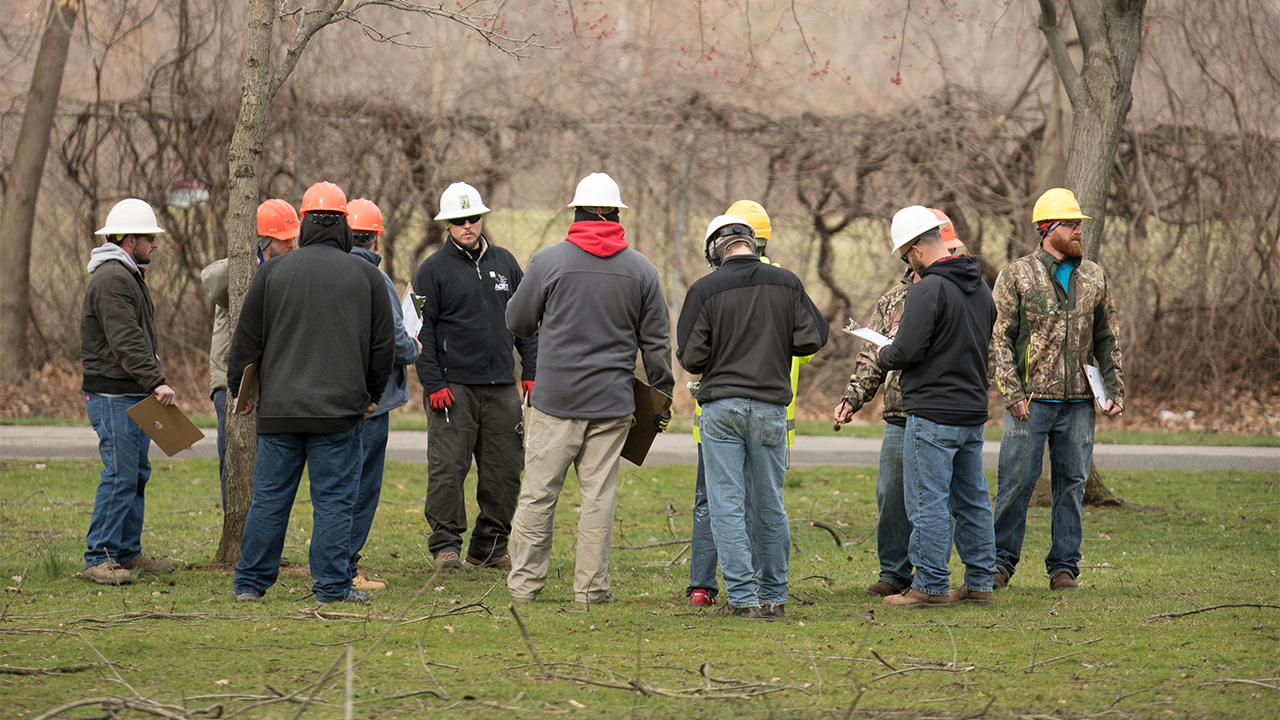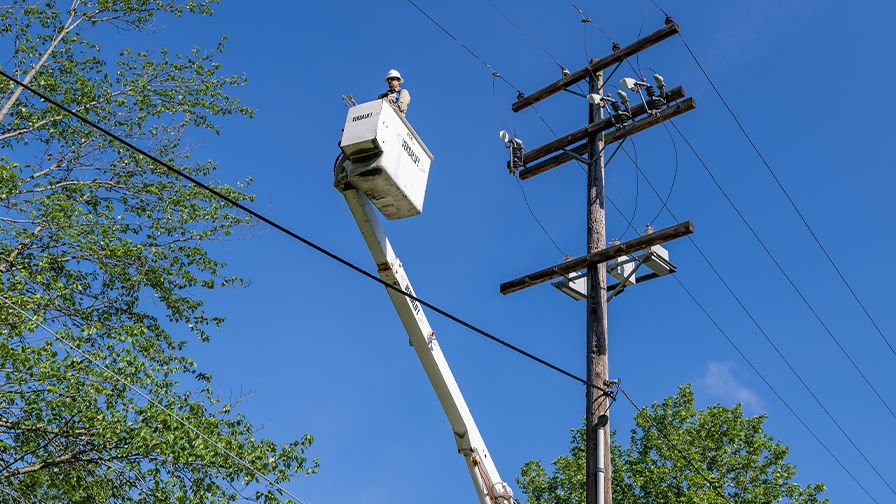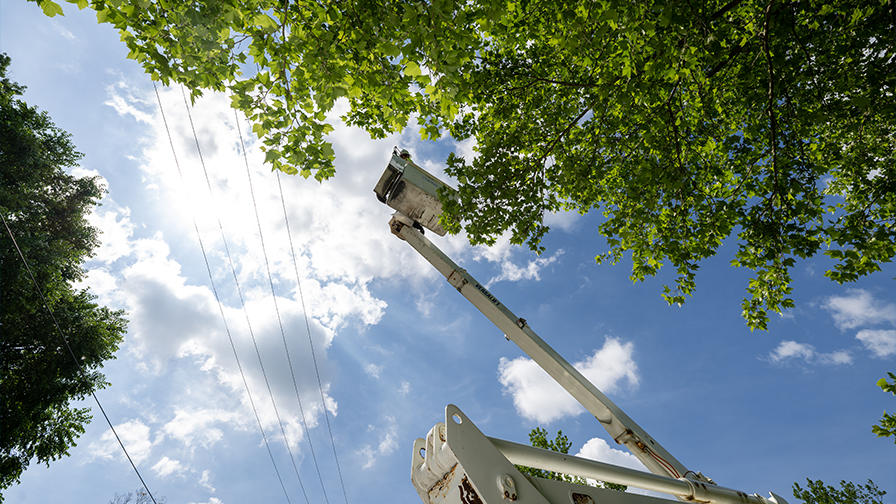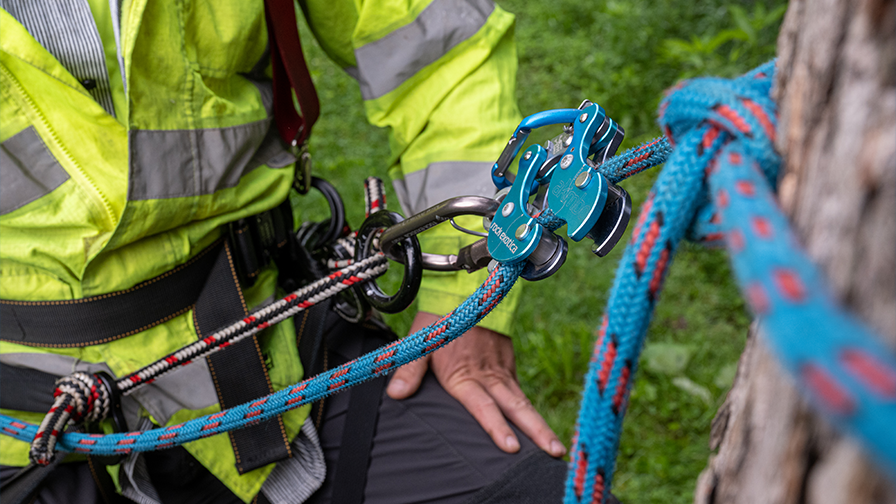Take Five for Safety: The Power of Implementing Five-Minute Meetings

Take Five for Safety: The Power of Implementing Five-Minute Meetings
 By Annissa May, school director, ACRT Arborist Training
By Annissa May, school director, ACRT Arborist Training
Five minutes can save lives. We’re all familiar with job safety briefings as they allow us to start each workday safely on the same page. Five-minute meetings offer an additional layer of education on hazards that might appear throughout the day. These meetings are meant to be short and a time to discuss one topic that could save someone’s life that day. Implementing five-minute meetings – oftentimes referred to as safety tailboards, safety minutes, safety briefs, or safety chats – is an important, yet easy way to bolster an organization’s culture of safety.
So, what is the value behind five-minute meetings, and are they worth the extra effort?
Slice refers to these moments as “safety boosters” and notes, “In fact, this is a good time to touch on subjects that aren’t necessarily part of your regular toolbox talks or other safety meetings and training. Consider subjects that may not even relate to the workplace.”
While on job sites, our instructors monitor crews and ensure that they adhere to all applicable safety standards, such as OSHA and other state requirements. Anytime crews fail to follow those standards, we conduct a short class on how to do that task according to regulations. If we start to notice reoccurring trends, we produce five-minute meetings to address those topics.
One example that comes to mind is when we noticed a crew touching secondary lines with their hands. The insulation on secondaries is not intended to protect workers; it is intended to prevent the wires from shorting out. The smallest pinhole in that insulation creates a shock or electrocution hazard. The best protection for workers is maintaining minimum approach distance and understanding theories such as indirect contact. With a five-minute meeting dedicated to that topic, the behaviors of the crews changed, reducing risk, and improving safety.
Those are the sort of things you want to notice – when behaviors become commonplace, people become complacent, and that’s when accidents usually happen. We all know not to touch powerlines, but it’s easy to become numb to the danger when you work around them every day. Five-minute meetings are a reminder, even for the basics.
Five-minute meetings give crews an opportunity to reset, they’re a reality check of a sort. They’re meant to remind people that there’s danger around them and that they always need to be cognizant of the ways they can mitigate that risk to ensure they can go home in the evening. Those are the stakes. When a mistake is made, there is a chance someone won’t go home that night. I know it sounds dramatic, but when you’re working around high voltages, that is the reality of the situation.
EHS Insight says it best, “Avoiding workplace injury through education is one of the best ways to prevent accidents from happening and keeping production humming along, and these short, sweet, and to-the-point safety talks are perfect for getting the point across.”
Whether you discuss broader topics such as slips, trips, and falls or job-specific topics like secondary line hazards, developing a library of five-minute meetings can be beneficial to your organization and its employees.
If you find yourself scratching your head when brainstorming five-minute meeting topics, Palm Beach State College offers a few ideas.
• Saving Your Back
• Slip-Trip-Fall Protection
• Reporting Your Work-Related Injury or Illness
• Sun Safety
• Electrical Safety
• Responding to a Chemical or Oil Spill
• How to Use a Portable Fire Extinguisher
• Utility Knife Safety
• Cold and Flu Prevention
• Protecting Your Sight
• Safe Work Habits
• Unsafe Acts
• Seven Common Causes of Accidents
• Aerial Lift Safety
Now, the question is, will you and your crew take five for safety?
This article was originally published in Landscape Business.
Related Articles

Five-Minute Meeting: Working Around Secondary Wires and Low Voltage Lines Though the American National Standards Institute (ANSI) Z133 allows us to “avoid contact” with secondary lines or those under 750 volts, we need to exercise caution around these lines because they carry lethal voltage. Secondaries have lower voltage than primaries. We can distinguish them by[...]
Read More
Five-Minute Meeting: Working Overhang When conducting pruning operations, even for small branches, the best practice is to remove branches in a “total branch control” manner using ropes or by reducing the size of the branch you are cutting into a much smaller piece. In a weekly kick-off safety meeting, a utility noted a situation that[...]
Read More
Aerial lifts cannot touch energized lines and arborists must be aware of minimum approach distance (MAD). Learn more.
Read More
Wear, tear, and other damage to equipment can present safety hazards in the field. Equipment maintenance can prevent these safety hazards from arising and is essential for continued safe work with that equipment.
Read MoreSUBSCRIBE
Subscribe to our mailing list to receive updates.
Categories
Recent Posts
- How-To: Learning Knot Basics 02th Aug 2018
- How-To: Tying a Stopper knot 07th Aug 2018
- How-To: Selecting the Right Safety Vest 21th Aug 2018
- How-To: Tying a Slip Knot 04th Sep 2018
- How-To: Inspecting Your Snaps 18th Sep 2018
Training the Next Generation
All our classes are built on industry safety practices. Ready to start learning?